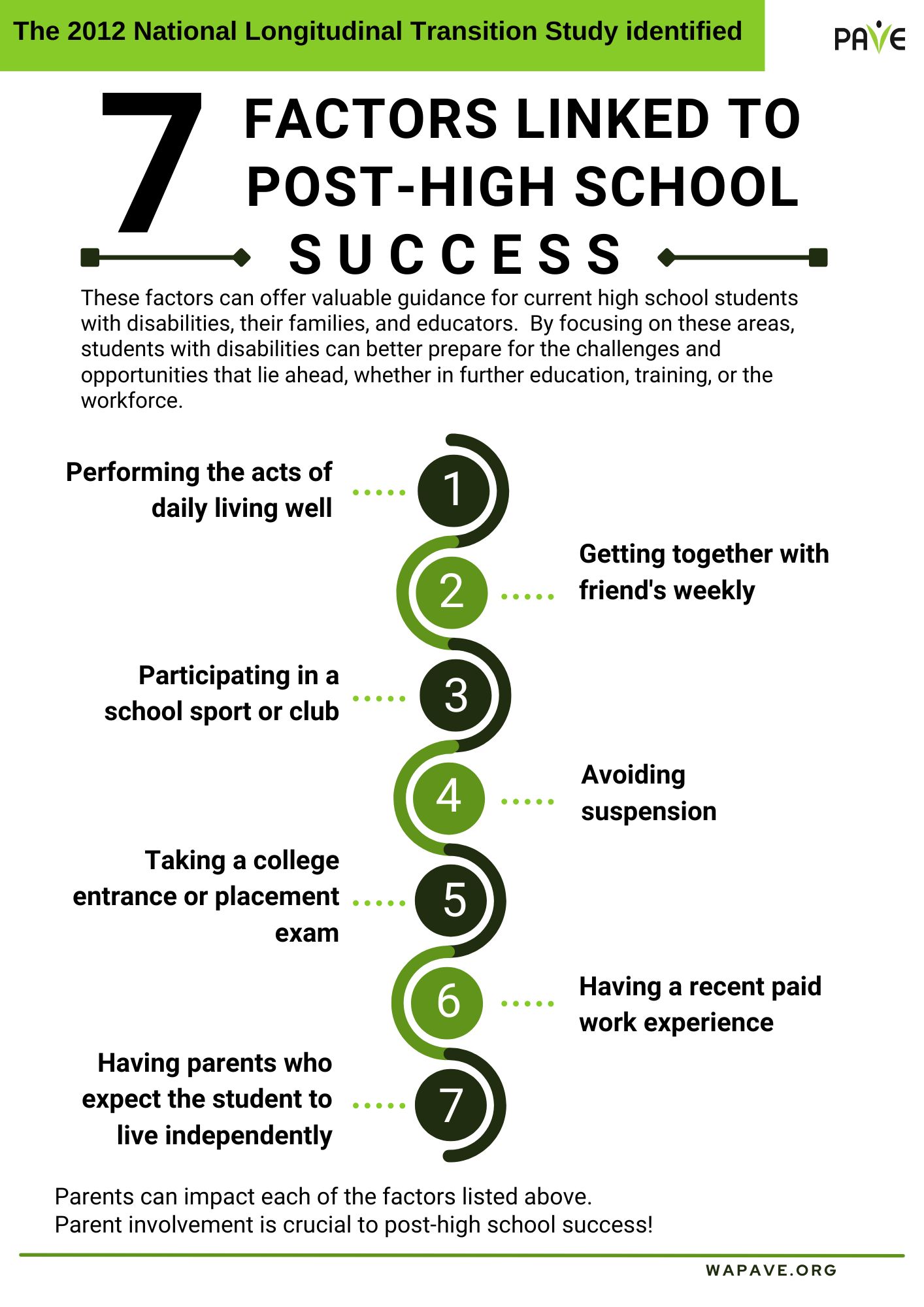These factors can offer valuable guidance for current high school students with disabilities, their families, and educators. By focusing on these areas, students with disabilities can better prepare for the challenges and opportunities that lie ahead, whether in future education, training, or workforce.
- Performing the acts of daily living well
- Getting together with friends weekly
- Participating in a school sport or club
- Avoiding suspension
- Taking a college entrance or placement exam
- Having a recent paid work experience
- Having parents who expect the student to live independently.
Here’s an expanded list with different examples for each factor, considering the diverse abilities of students:
- Performing the acts of daily living well
Example for a student with physical disabilities: Using adaptive equipment to cook independently.
Example for a student with cognitive disabilities: Following a personalized daily routine effectively.
- Getting together with friends weekly
Example for a student with social communication difficulties: Participating in virtual hangouts or online gaming sessions.
Example for a student with mobility challenges: Attending social gatherings with accessibility accommodations.
- Participating in a school sport or club
Example for a student with sensory sensitivities: Engaging in a quiet club like chess or art appreciation.
Example for a student with physical disabilities: Participating in adaptive sports or inclusive recreational activities.
- Avoiding suspension
Example for a student with behavioral challenges: Utilizing personalized behavior plans and support systems effectively.
Example for a student with emotional difficulties: Engaging in counseling or therapy to manage emotions and behavior.
- Taking a college entrance or placement exam
Example for a student with learning disabilities: Using accommodations such as extended time or a quiet testing environment.
Example for a student with visual impairments: Accessing exams in braille or using screen reader technology.
- Having a recent paid work experience
Example for a student with physical disabilities: Completing an internship with accommodations for accessibility.
Example for a student with intellectual disabilities: Participating in a supported employment program.
- Having parents who expect the student to live independently.
Example for a student with developmental disabilities: Working with parents and educators on transition planning for independent living skills.
Example for a student with autism: Participating in life skills training and community integration programs.
These examples illustrate how each factor can be tailored to accommodate and support students with different abilities, helping them prepare for their post-high school journey effectively.

These factors form part of our resource – the Planning My Path Practical Tips and Tools for Future Planning. This toolkit encompasses a collection of our informative articles, complemented by easy to understand timeline charts to provide you with a solid foundation as you navigate through this crucial transition period.

